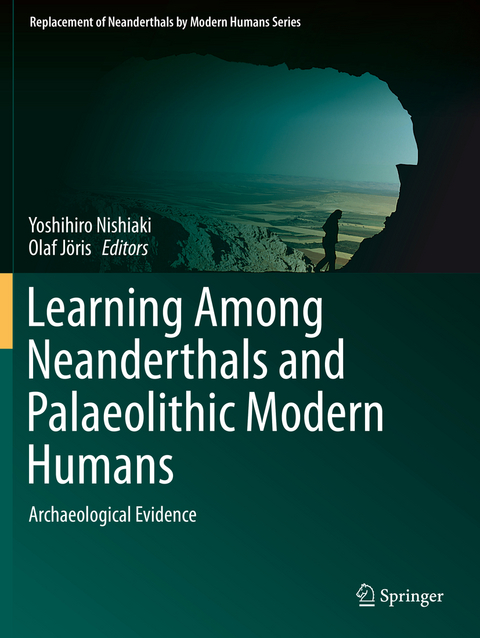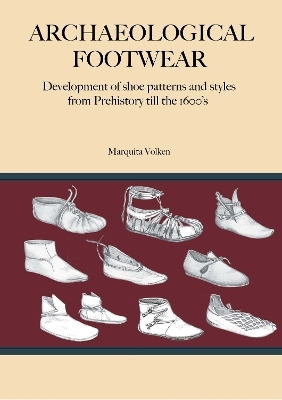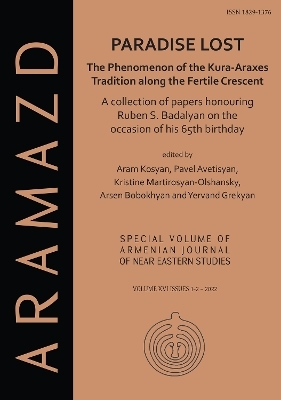
Learning Among Neanderthals and Palaeolithic Modern Humans
Springer Verlag, Singapore
978-981-13-8982-5 (ISBN)
Yoshihiro Nishiaki, who received his Ph.D. from University College London, is a professor of prehistory at the University Museum, The University of Tokyo. His research involves the archaeology of West and Central Asia mainly through technological analyses of flaked stone artifacts. He has directed numerous field investigations in West and Central Asia since 1984, including Paleolithic and Neolithic excavations in Syria, Azerbaijan, Iran, and Uzbekistan. He is currently the director of PaleoAsia, a large-scale research project investigating the formation processes of modern human cultures in Asia, supported by the Ministry of Education, Culture, Sports, Science and Technology, Japan. He has served on the editorial board or scientific committee of a number of international associations, such as the International Union for Quaternary Research, the International Union of Prehistoric and Protohistoric Sciences, and Association Paléorient. Olaf Jöris received his Ph.D. from the University of Cologne, Germany. He is senior scientist at and deputy head of the MONREPOS Archaeological Research Centre and Museum for Human Behavioural Evolution in Neuwied, Germany – a department of the Römisch-Germanisches Zentralmuseum Mainz, Leibniz Research Institute for Archaeology. His research focuses on the archaeological evidence for understanding the evolution of human behaviour from a diachronic perspective. He has directed fieldwork in Germany, Georgia, and China. He has been involved in numerous inter- and transdisciplinary projects, regularly serves as reviewer or editor in international journals, and is member of several international research organizations. He teaches prehistoric archaeology at the Johannes Gutenberg University Mainz, Germany, and, since 2014, has been a visiting professor at Lanzhou University, Gansu Province, China.
1. Learning Behaviors among Neanderthals and Paleolithic Modern Humans: An Introduction.- 2. Neural Underpinnings of Creative Thinking and Tool Use: A Meta-Analysis of Neuroimaging Data.- 3. The Expert Performance Model of Neanderthal Cognition.- 4. Cognitive Capacities of the Neanderthals.- 5. Mastering Hammer Use in Stone Knapping: An Experiment.- 6. Evidence for Neanderthal Hand-Preferences from the Late Middle Paleolithic Site of Buhlen, Germany: Insights into Neanderthal Learning Behaviour.- 7. Good and Bad Knappers Among Neanderthals.- 8. The Apprentice Core: Evidence from a Lithic Refitting at the Upper Paleolithic Site Kyushirataki-5 in Hokkaido, Northern Japan.- 9. Learning Behavior of Sanukite Knapping among the Upper Paleolithic communities of Suichoen, Japan.- 10. Strong Differences in Neanderthal and AMH cannot be Inferred from Ethnographic Evidence for Skill and Learning in Hunting.- 11. Marine shells from Tor Fawaz, southern Jordan, Southern Jordan, and Their Implications for Behavioral Changes from the Middle to Upper Paleolithic in the Levant.- 12. Modeling Learning Strategies and the Expansion of the Social Network in the Beginning of Upper Paleolithic Europe: Analysis by Agent-Based Simulation.- 13. Transculturation versus Acculturation: A Clarification.- 14. Ratchets and Replacement: The Potential Role of Cultural Accumulation in the Replacement of Neanderthals by Modern Humans.
| Erscheinungsdatum | 15.01.2021 |
|---|---|
| Reihe/Serie | Replacement of Neanderthals by Modern Humans Series |
| Zusatzinfo | 82 Illustrations, color; 45 Illustrations, black and white; X, 218 p. 127 illus., 82 illus. in color. |
| Verlagsort | Singapore |
| Sprache | englisch |
| Maße | 210 x 279 mm |
| Themenwelt | Geisteswissenschaften ► Archäologie |
| Sozialwissenschaften ► Ethnologie | |
| Sozialwissenschaften ► Soziologie | |
| Schlagworte | Cognitive ability • Learning Behaviour • Lithic technology • Middle and Upper Palaeolithic archeology • Modern Humans • Neanderthals • Social Environment |
| ISBN-10 | 981-13-8982-9 / 9811389829 |
| ISBN-13 | 978-981-13-8982-5 / 9789811389825 |
| Zustand | Neuware |
| Haben Sie eine Frage zum Produkt? |
aus dem Bereich


